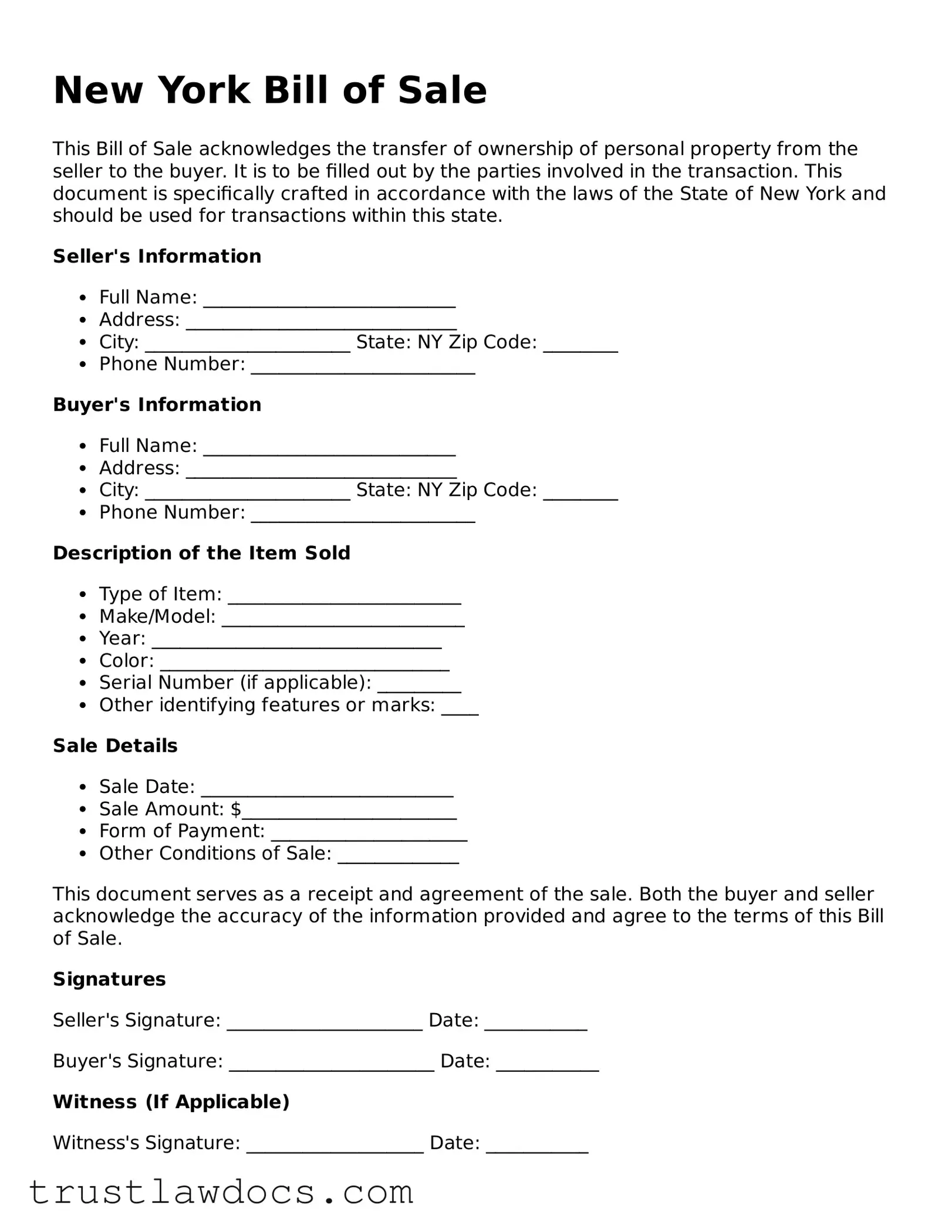What is a Bill of Sale form used for in New York?
In New York, a Bill of Sale form serves as a legal document that records the transfer of ownership from a seller to a buyer. It is commonly used for private sales of vehicles, boats, motorcycles, and sometimes for personal property like electronics or animals. The form provides proof of the transaction, including details like the date of sale, purchase price, and information about the items being sold.
Do I need to notarize my Bill of Sale in New York?
No, New York does not require a Bill of Sale to be notarized for most personal property transactions. However, when it comes to vehicles, boats, or other specific items that require registration with the state, additional documentation might be needed, which may require notarization. It's always a good idea to check the most current requirements for your specific type of transaction.
Is a Bill of Sale the same as a title?
No, a Bill of Sale is not the same as a title. A title is an official document issued by the state that signifies legal ownership of the vehicle, boat, or another item. The Bill of Sale, on the other hand, is a record of the transaction between the buyer and seller, showing that an agreement was made and payment was exchanged. While the Bill of Sale is important, the title is necessary for legally transferring ownership in New York.
Can I create my own Bill of Sale for a transaction in New York?
Yes, you can create your own Bill of Sale for transactions in New York. The document should include specific details such as the full names and addresses of the buyer and seller, a description of the item being sold, the sale price, the date of sale, and signatures from both parties. While templates are available, ensuring that the Bill of Sale meets all the necessary legal requirements is important.
What information do I need to include in a New York Bill of Sale?
A New York Bill of Sale should include the names and addresses of the buyer and seller, a detailed description of the item being sold (including make, model, year, and serial number if applicable), the sale price, the date of sale, and signatures from both the seller and the buyer. It's also advisable to mention any warranties or "as-is" status of the sale.
How does a Bill of Sale protect me?
A Bill of Sale provides several layers of protection for both the buyer and the seller. For the seller, it offers proof that the item was indeed sold and transferred to the buyer, which can be important for tax and liability reasons. For the buyer, it serves as evidence of the terms and conditions of the sale, such as the purchase price and a description of the item, which is crucial for resolving disputes, proving ownership, or registering the item with the state if required.
